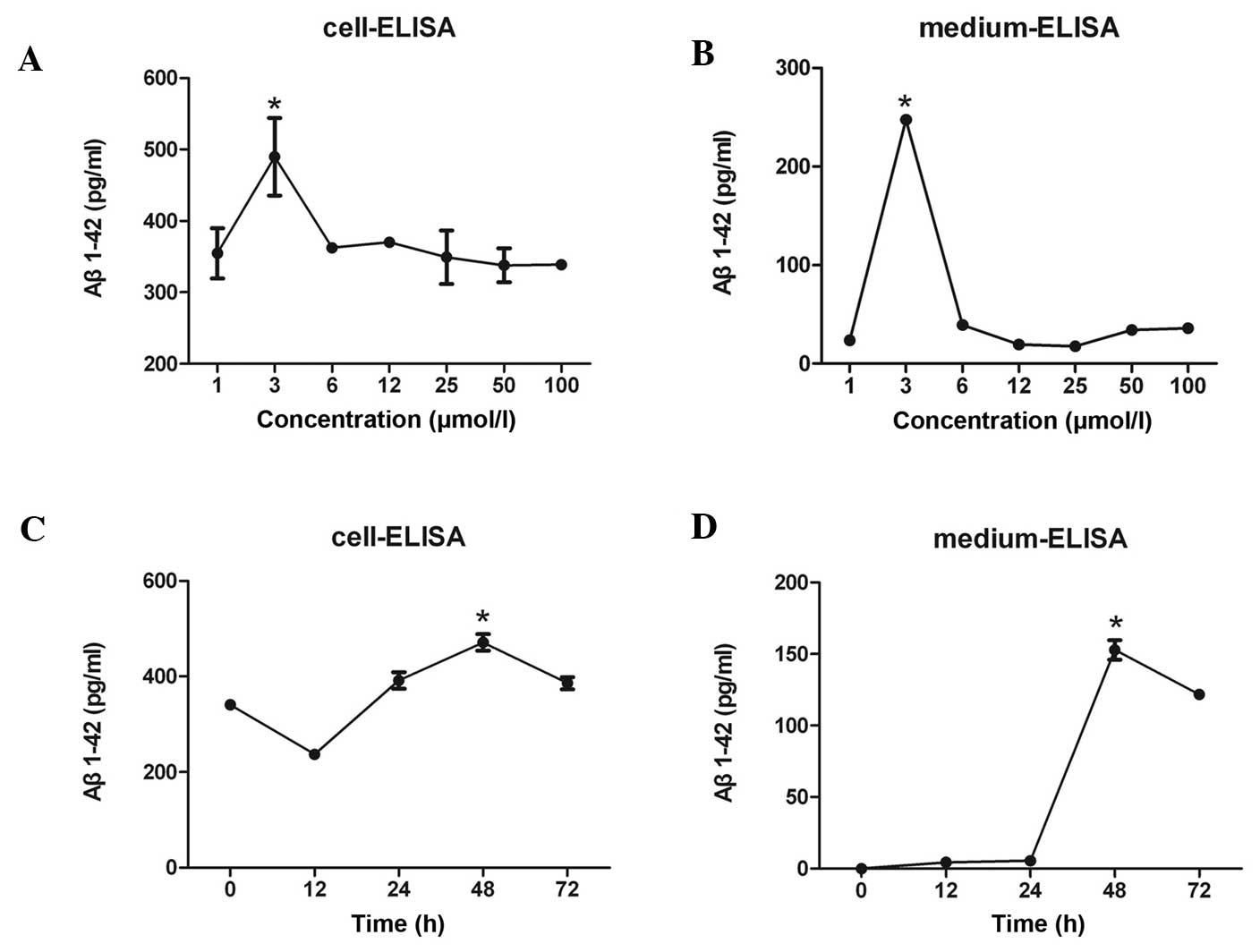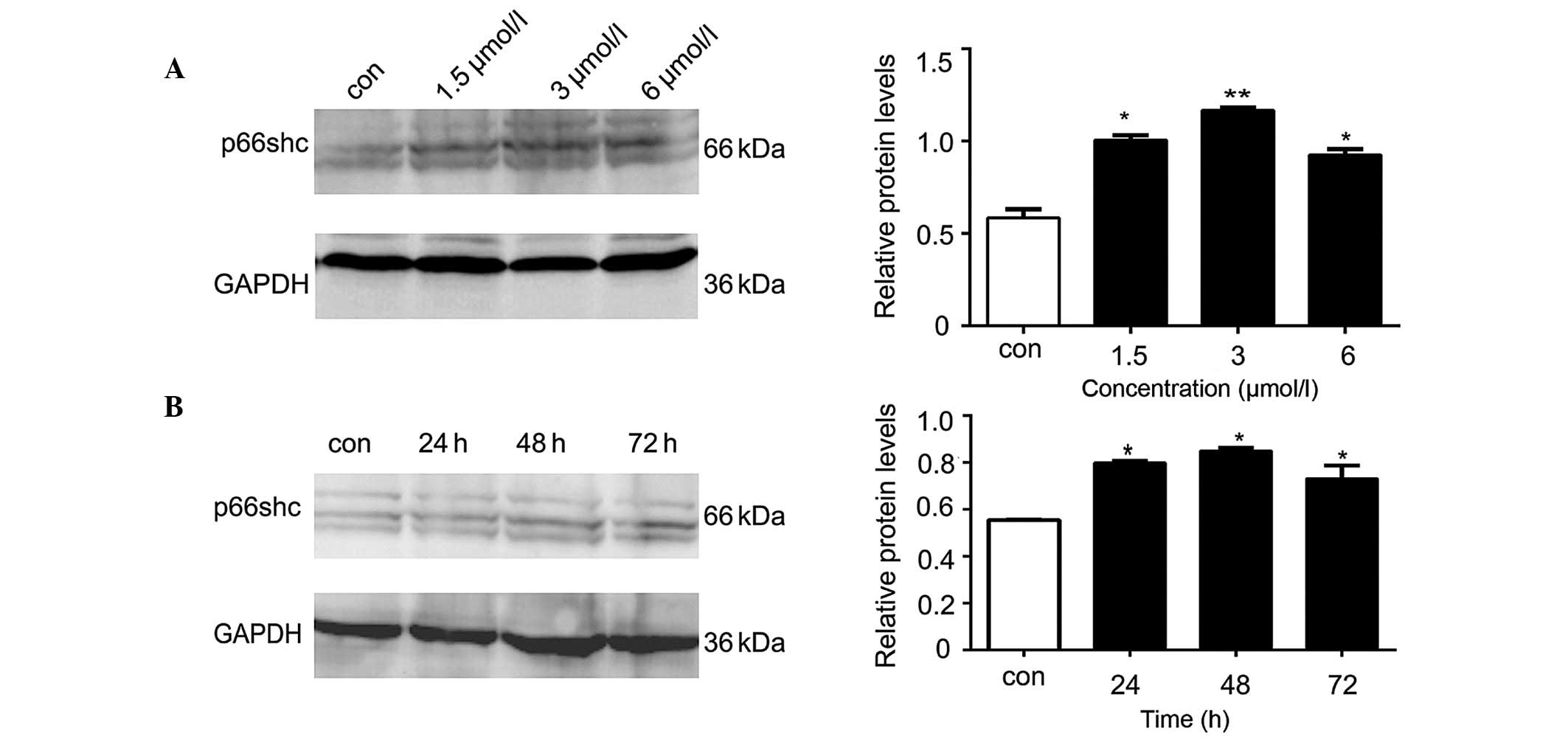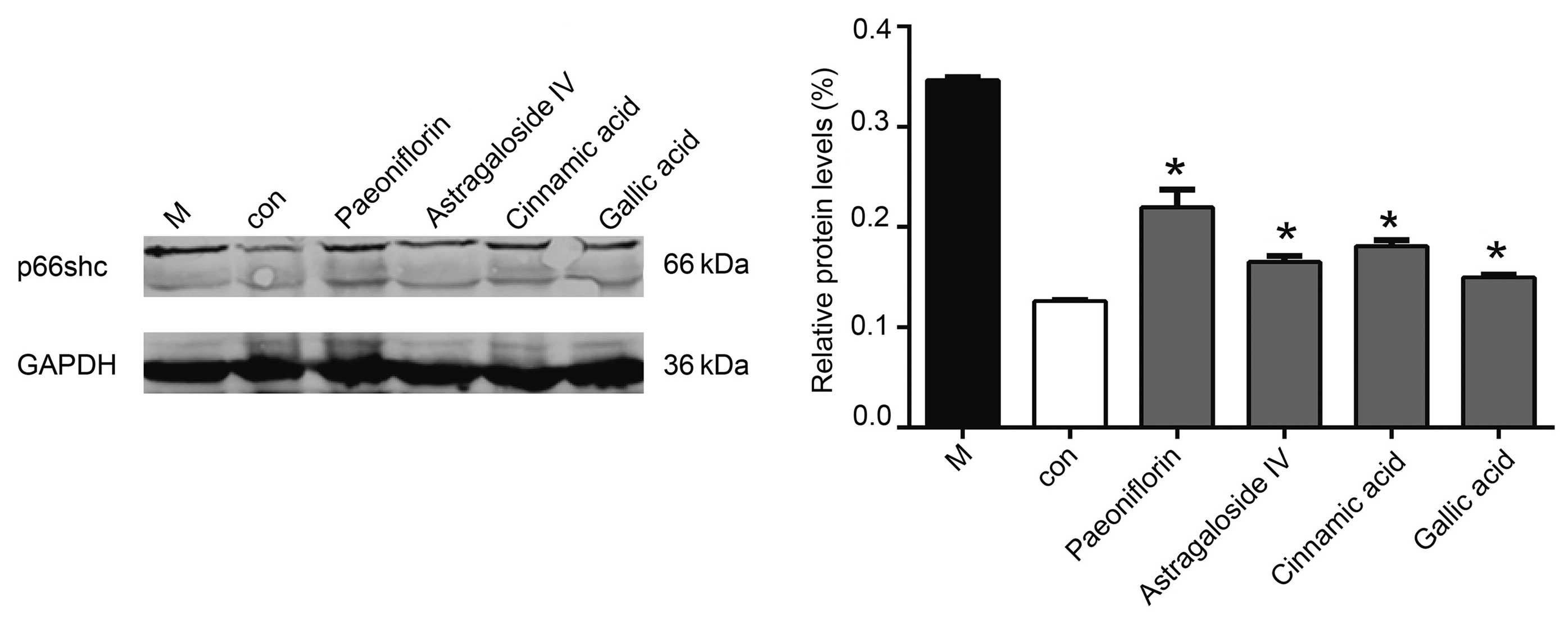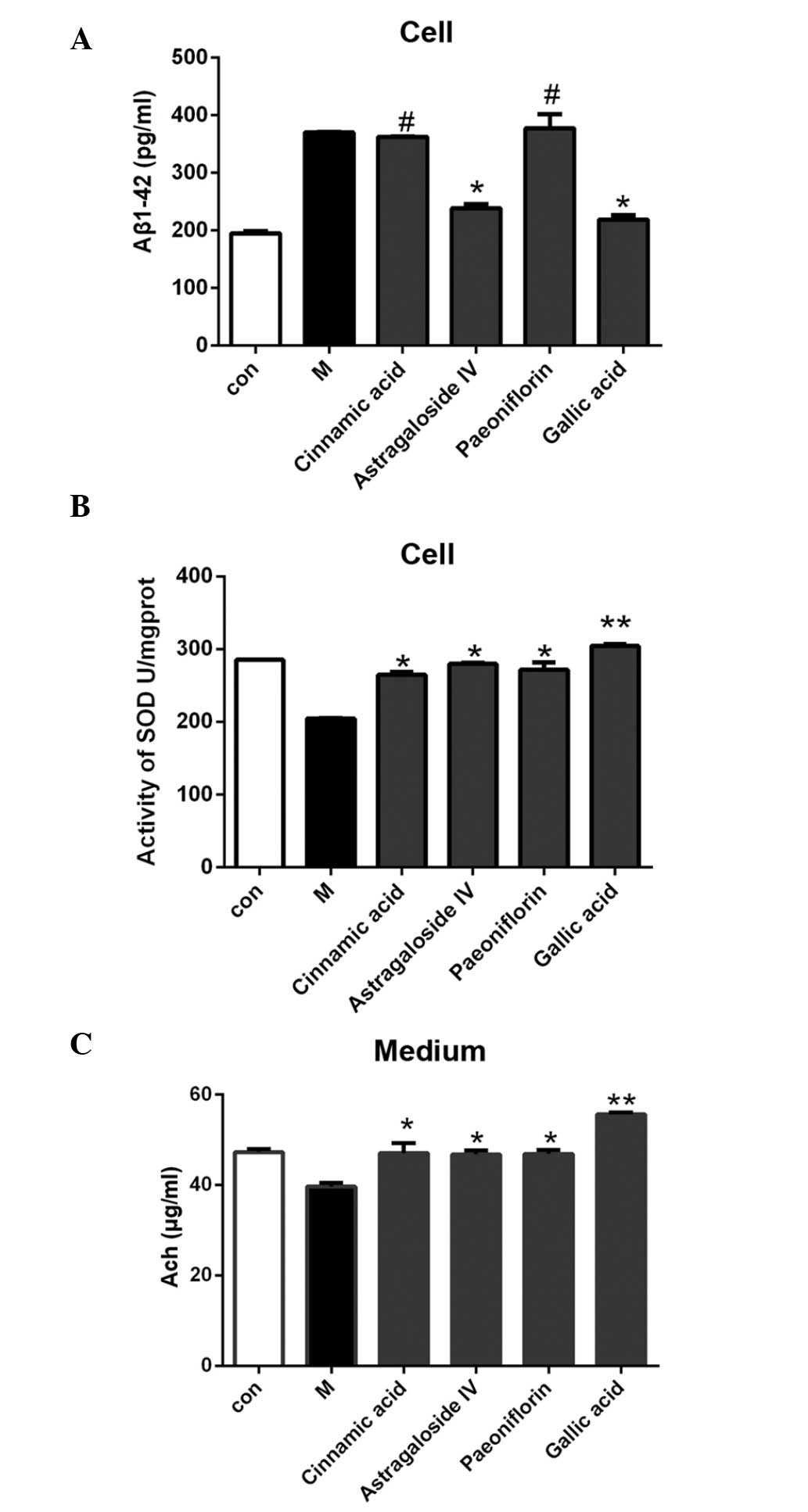|
1
|
Götz J, Deters N, Doldissen A, Bokhari L,
Ke Y, Wiesner A, Schonrock N and Ittner LM: A decade of tau
transgenic animal models and beyond. Brain Pathol. 17:91–103. 2007.
View Article : Google Scholar : PubMed/NCBI
|
|
2
|
Mattson MP: Pathways towards and away
fromA lzheimer's disease. Nature. 430:631–639. 2004. View Article : Google Scholar : PubMed/NCBI
|
|
3
|
Minter MR, Taylor JM and Crack PJ: The
contribution of neuro-inflammation to amyloid toxicity in
Alzheimer's disease. J Neurochem Oct. 28:2015.(Epub ahead of
print).
|
|
4
|
Wimo A: Long-term effects of A lzheimer's
disease treatment. Lancet Neurol. doi:
http://dx.doi.org/10.1016/S1474-4422(15)00302-6. PubMed/NCBI
|
|
5
|
Mawuenyega KG, Sigurdson W, Ovod V,
Munsell L, Kasten T, Morris JC, Yarasheski KE and Bateman RJ:
Decreased clearance of CNS beta-amyloid in Alzheimer's disease.
Science. 330:17742010. View Article : Google Scholar : PubMed/NCBI
|
|
6
|
Migliaccio E, Giorgio M, Mele S, Pelicci
G, Reboldi P, Pandolfi PP, Lanfrancone L and Pelicci PG: The p66shc
adaptor protein controls oxidative stress response and life span in
mammals. Nature. 402:309–313. 1999. View
Article : Google Scholar : PubMed/NCBI
|
|
7
|
Shan W, Gao L, Zeng W, Hu Y, Wang G, Li M,
Zhou J, Ma X, Tian X and Yao J: Activation of the SIRT1/p66shc
antiapoptosis pathway via carnosic acid-induced inhibition of
miR-34a protects rats against nonalcoholic fatty liver disease.
Cell Death Dis. 6:e18332015. View Article : Google Scholar : PubMed/NCBI
|
|
8
|
Priami C, De Michele G, Cotelli F,
Cellerino A, Giorgio M, Pelicci PG and Migliaccio E: Modelling the
p53/p66Shc Aging Pathway in the Shortest Living Vertebrate
Nothobranchius Furzeri. Aging Dis. 6:95–108. 2015. View Article : Google Scholar : PubMed/NCBI
|
|
9
|
Li X, Gao D, Wang H, Li X, Yang J, Yan X,
Liu Z and Ma Z: Negative feedback loop between p66Shc and ZEB1
regulates fibrotic EMT response in lung cancer cells. Cell Death
Dis. 6:e17082015. View Article : Google Scholar : PubMed/NCBI
|
|
10
|
Bhat SS, Anand D and Khanday FA: p66Shc as
a switch in bringing about contrasting responses in cell growth,
Implications on cell proliferation and apoptosis. Mol Cancer.
14:762015. View Article : Google Scholar : PubMed/NCBI
|
|
11
|
Perrini S, Tortosa F, Natalicchio A,
Pacelli C, Cignarelli A, Palmieri VO, Caccioppoli C, De Stefano F,
Porro S, Leonardini A, et al: The p66Shc Protein Controls Redox
Signaling and Oxidation-Dependent DNA Damage in Human Liver Cells.
Am J Physiol Gastrointest Liver Physiol: Sep. 3:2015.(Epub ahead of
print).
|
|
12
|
Sampaio SF, Branco AF, Wojtala A,
Vega-Naredo I, Wieckowski MR and Oliveira PJ: p66Shc signaling is
involved in stress responses elicited by anthracycline treatment of
rat cardiomyoblasts. Arch Toxicol Aug. 30:2015.(Epub ahead of
print).
|
|
13
|
Guo X, Wu X, Ren L, Liu G and Li L:
Epigenetic mechanisms of amyloid-β production in anisomycin-treated
SH-SY5Y cells. Neuroscience. 194:272–281. 2011. View Article : Google Scholar : PubMed/NCBI
|
|
14
|
Pena RR, Pereira-Caixeta AR, Moraes MF and
Pereira GS: Anisomycin administered in the olfactory bulb and
dorsal hippocampus impaired social recognition memory consolidation
in different time-points. Brain Res Bull. 109:151–157. 2014.
View Article : Google Scholar : PubMed/NCBI
|
|
15
|
Sorg BA, Todd RP, Slaker M and Churchill
L: Anisomycin in the medial prefrontal cortex reduces
reconsolidation of cocaine-associated memories in the rat
self-administration model. Neuropharmacology. 92:25–33. 2015.
View Article : Google Scholar : PubMed/NCBI
|
|
16
|
Dubue JD, McKinney TL, Treit D and Dickson
CT: Intrahippocampal Anisomycin Impairs Spatial Performance on the
Morris Water Maze. J Neurosci. 35:11118–11124. 2015. View Article : Google Scholar : PubMed/NCBI
|
|
17
|
Hardy J and Selkoe DJ: The amyloid
hypothesis of Alzheimer's disease: Progress and problems on the
road to therapeutics. Science. 297:353–356. 2002. View Article : Google Scholar : PubMed/NCBI
|
|
18
|
Zou G, Du X, Duan T and Liu T: Application
of a NotI subtraction and methylation specific genome subtractive
hybridization technique in the detection of genomic DNA methylation
differences between hydatidiform moles and villi. Mol Med Rep.
7:77–82. 2013.PubMed/NCBI
|
|
19
|
Chen Q, Qiu C, Huang Y, Jiang L, Huang Q,
Guo L and Liu T: Human amniotic epithelial cell feeder layers
maintain iPS cell pluripotency by inhibiting endogenous DNA
methyltransferase 1. Exp Ther Med. 6:1145–1154. 2013.PubMed/NCBI
|
|
20
|
Berry A, Greco A, Giorgio M, Pelicci PG,
de Kloet R, Alleva E, Minghetti L and Cirulli F: Deletion of the
lifespan determinant p66(Shc) improves performance in a spatial
memory task, decreases levels of oxidative stress markers in the
hippocampus and increases levels of the neurotrophin BDNF in adult
mice. Exp Gerontol. 43:200–208. 2008. View Article : Google Scholar : PubMed/NCBI
|
|
21
|
Berry A, Capone F, Giorgio M, Pelicci PG,
de Kloet ER, Alleva E, Minghetti L and Cirulli F: Deletion of the
life span determinant p66Shc prevents age-dependent increases in
emotionality and pain sensitivity in mice. Exp Gerontol. 42:37–45.
2007. View Article : Google Scholar : PubMed/NCBI
|
|
22
|
Berry A and Cirulli F: The p66(Shc) gene
paves the way for healthspan: Evolutionary and mechanistic
perspectives. Neurosci Biobehav Rev. 37:790–802. 2013. View Article : Google Scholar : PubMed/NCBI
|
|
23
|
Sone K, Mori M and Mori N: Selective
upregulation of p66-Shc gene expression in the liver and brain of
aged rats. Arch Gerontol Geriatr. 55:744–748. 2012. View Article : Google Scholar : PubMed/NCBI
|















